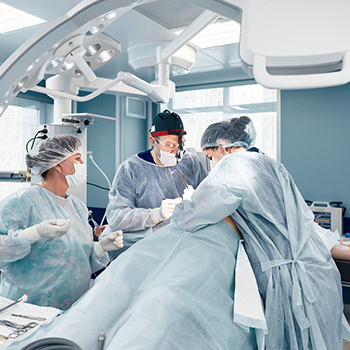Oncoplastic surgery is a subspecialty of plastic surgery that combines oncological principles with reconstructive techniques to treat patients with breast cancer. The goal of oncoplastic surgery is to remove the tumor while preserving as much normal tissue as possible, and then reconstructing the breast to its original shape and size. This approach aims to improve patient outcomes by reducing the need for multiple surgeries, minimizing scarring, and enhancing cosmetic results. Oncoplastic surgeons use a variety of techniques, including skin-sparing mastectomy, nipple-sparing mastectomy, and reconstruction with implants or autologous tissue, to achieve optimal results. By integrating oncological expertise with plastic surgery skills, oncoplastic surgeons can offer patients a more comprehensive approach to breast cancer treatment, focusing on both cure and cosmetic outcome. This approach has become increasingly popular in recent years, especially among women seeking a more personalized and holistic approach to breast cancer care.
a. Tumor reconstruction

Tumor resection and reconstruction is a critical aspect of plastic surgery, where a tumor is removed from the body and the resulting defect is repaired. The goal is to restore normal tissue function, minimize scarring, and improve appearance. The type of reconstruction technique used depends on the location and size of the tumor, as well as the patient's overall health. Techniques may include flap reconstruction, where healthy tissue is transferred from another part of the body to cover the defect, or implantation of prosthetic materials, such as mesh or tissue expanders. The surgeon must carefully balance aesthetics with function to achieve optimal results.
b. Local and free flaps
In plastic surgery, local flaps refer to a piece of tissue moved from one area of the body to another, usually within the same limb or region, to repair a defect. Free flaps, on the other hand, involve transplanting tissue from a distant part of the body to the affected area. Local flaps are commonly used for small defects, such as skin lesions or wounds, and can be secured with sutures or staples. Free flaps require microsurgical anastomosis of blood vessels and nerves, making them more complex and often used for larger defects or reconstruction after trauma or cancer treatment.
c. Breast reconstructive surgery
Breast reconstructive surgery after cancer aims to restore the shape and appearance of the breast after a mastectomy or lumpectomy. The procedure can be performed at the same time as the initial cancer surgery, or later as a separate procedure. Techniques include implant-based reconstruction, where a breast implant is placed under the chest muscle, or autologous tissue reconstruction, where tissue is transferred from another part of the body, such as the abdomen or back. The goal is to achieve a natural-looking and feeling breast, and to improve overall body image and confidence. The procedure typically requires multiple surgeries and follow-up appointments.


